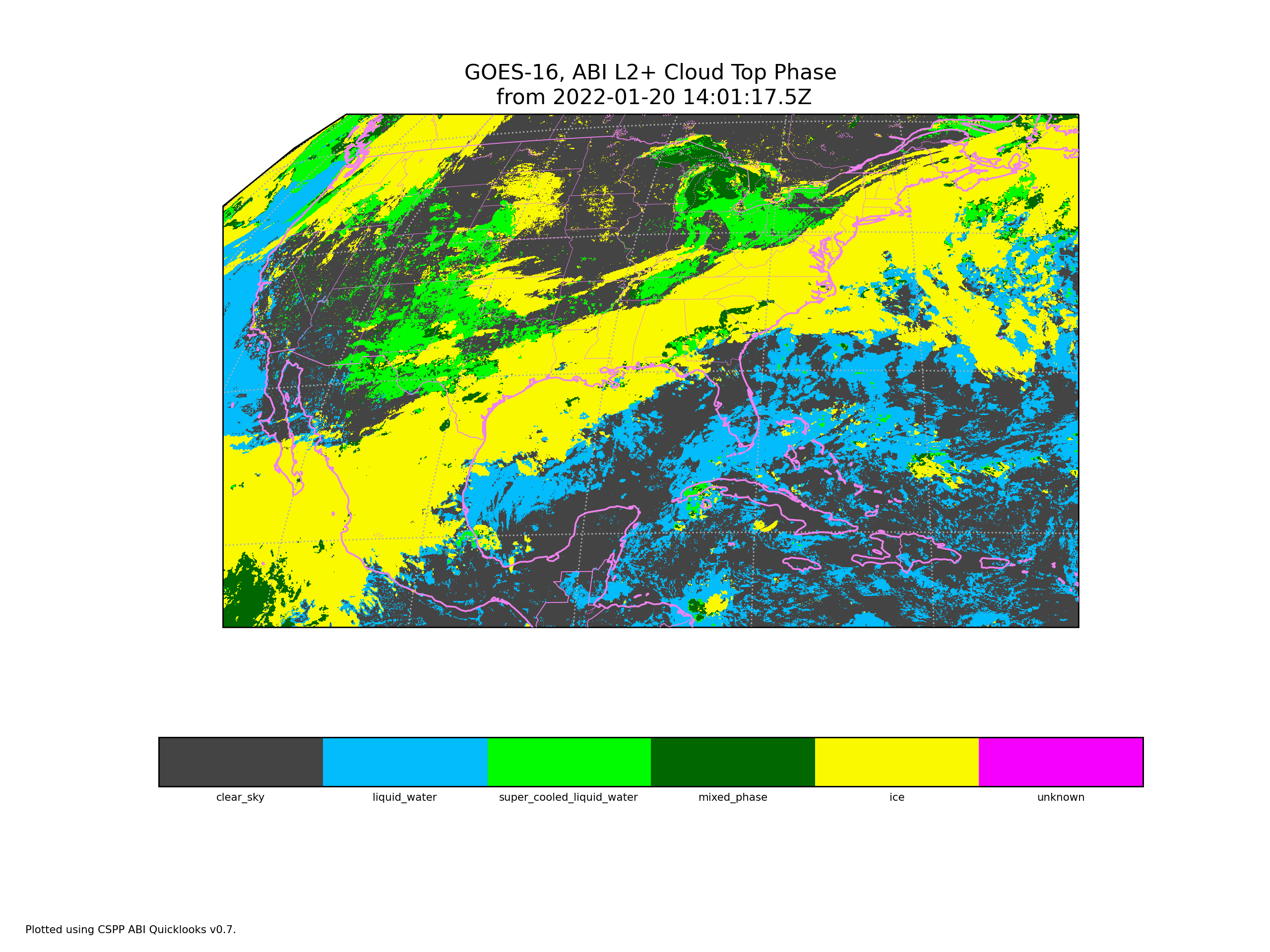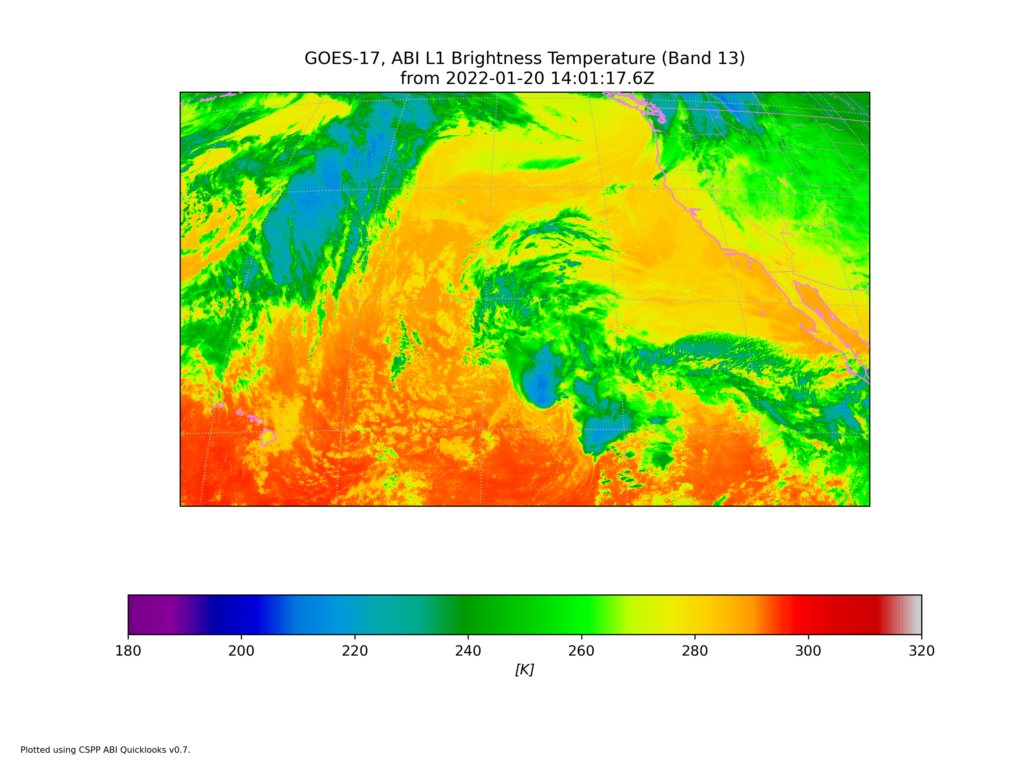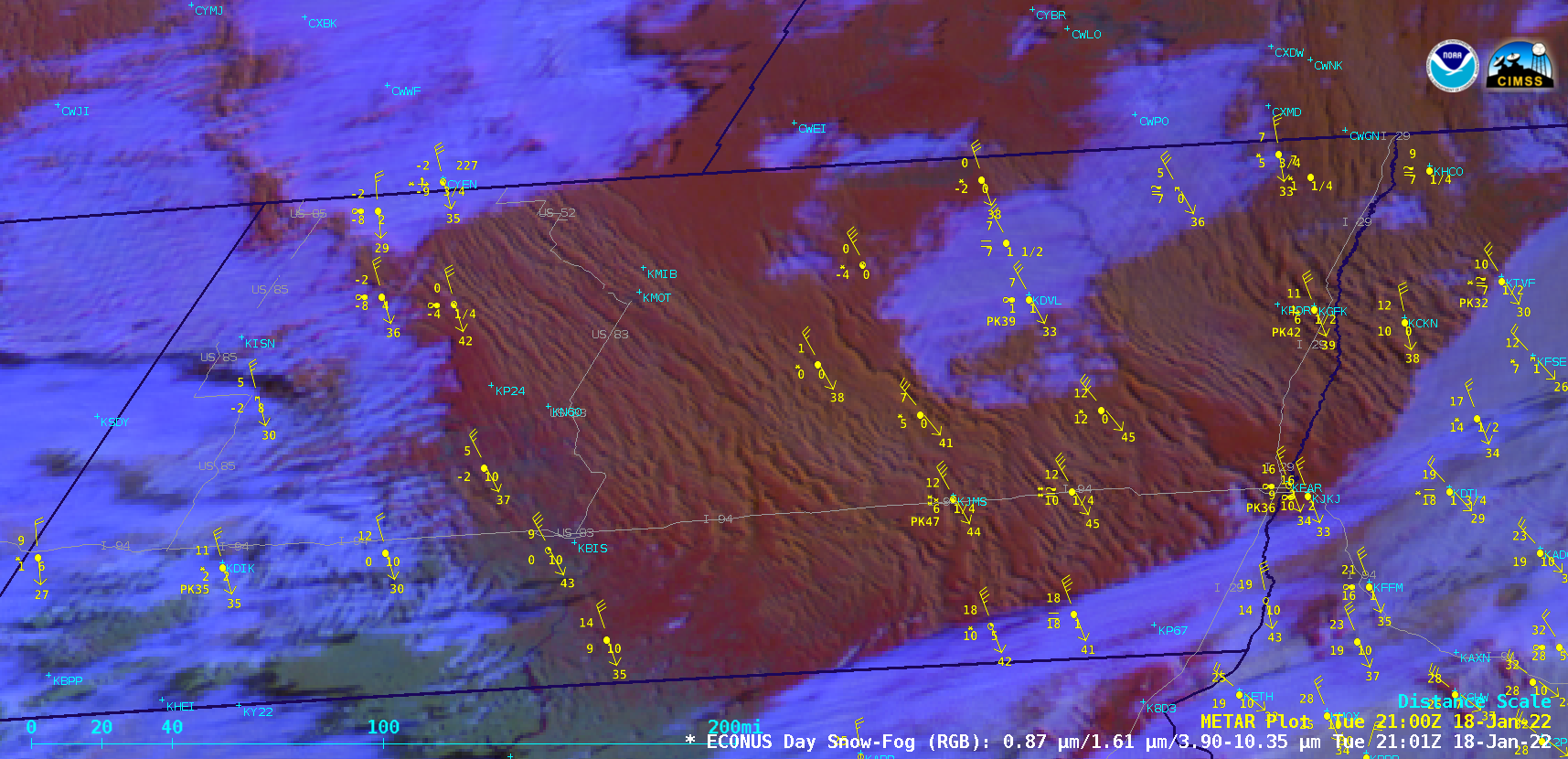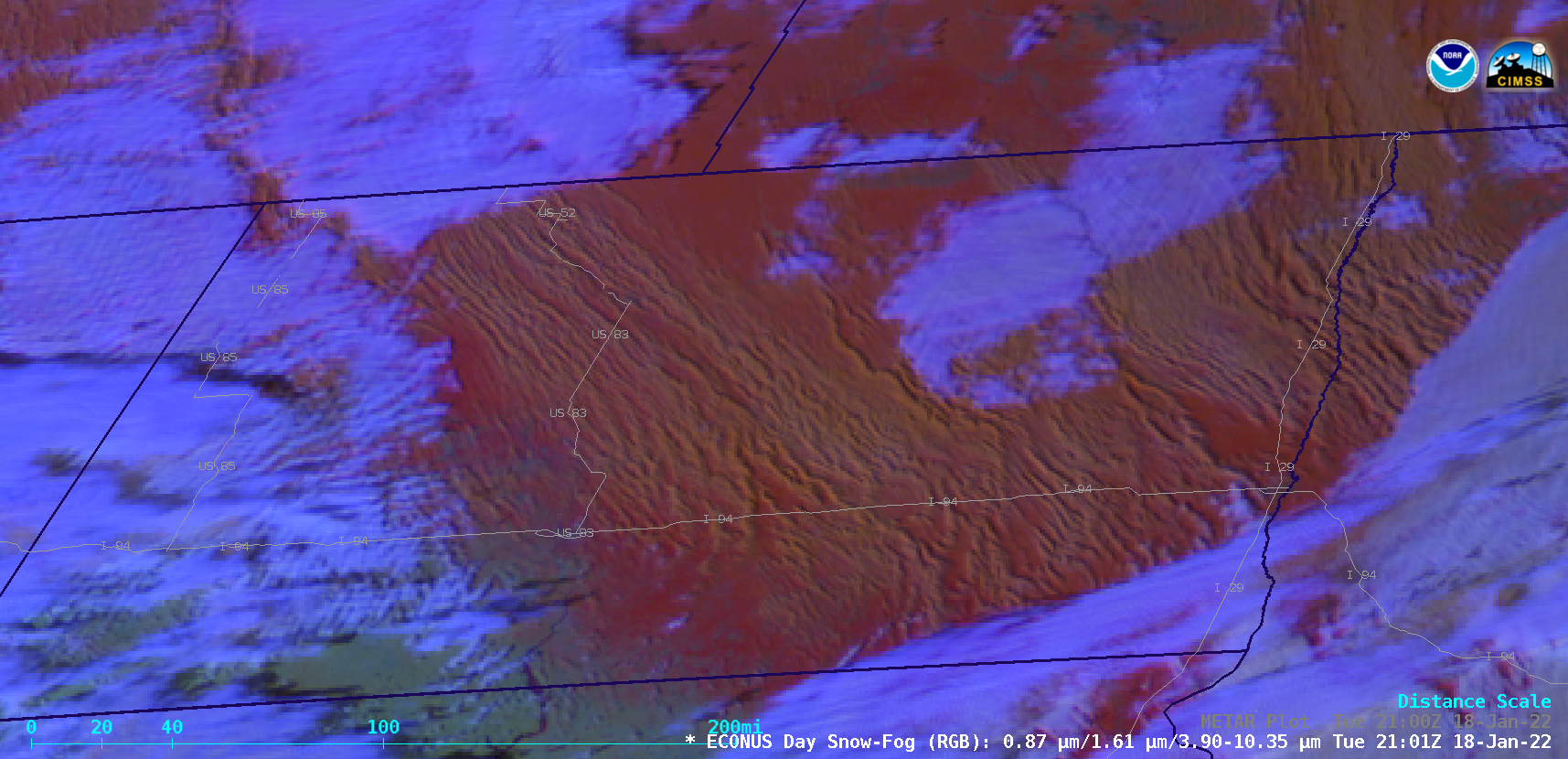
GOES-16 (GOES-East) Mid-level Water Vapor (6.9 µm) images (above) revealed the formation of a standing wave cloud along the Minnesota shoreline of Lake Superior on 19 January 2022. This cloud feature was formed by a vertically-propagating internal gravity wave that resulted from the interaction of strong post-cold-frontal northwesterly winds with the topography of the shoreline... Read More

GOES-16 Mid-level Water Vapor (6.9 µm) images [click to play animated GIF | MP4]
GOES-16
(GOES-East) Mid-level Water Vapor (
6.9 µm) images
(above) revealed the formation of a standing wave cloud along the Minnesota shoreline of Lake Superior on 19 January 2022. This cloud feature was formed by a vertically-propagating internal gravity wave that resulted from the interaction of strong post-cold-frontal northwesterly winds with the
topography of the shoreline — the terrain quickly drops from an elevation of about 2000 feet above sea level (over northeastern Minnesota) to about 600 feet above sea level (over Lake Superior) in a very short distance.
In a toggle between GOES-16 Water Vapor and Suomi-NPP VIIRS Infrared Window images at 1811 UTC (below), the coldest cloud-top infrared brightness temperatures were around -40ºC (lime green enhancement).
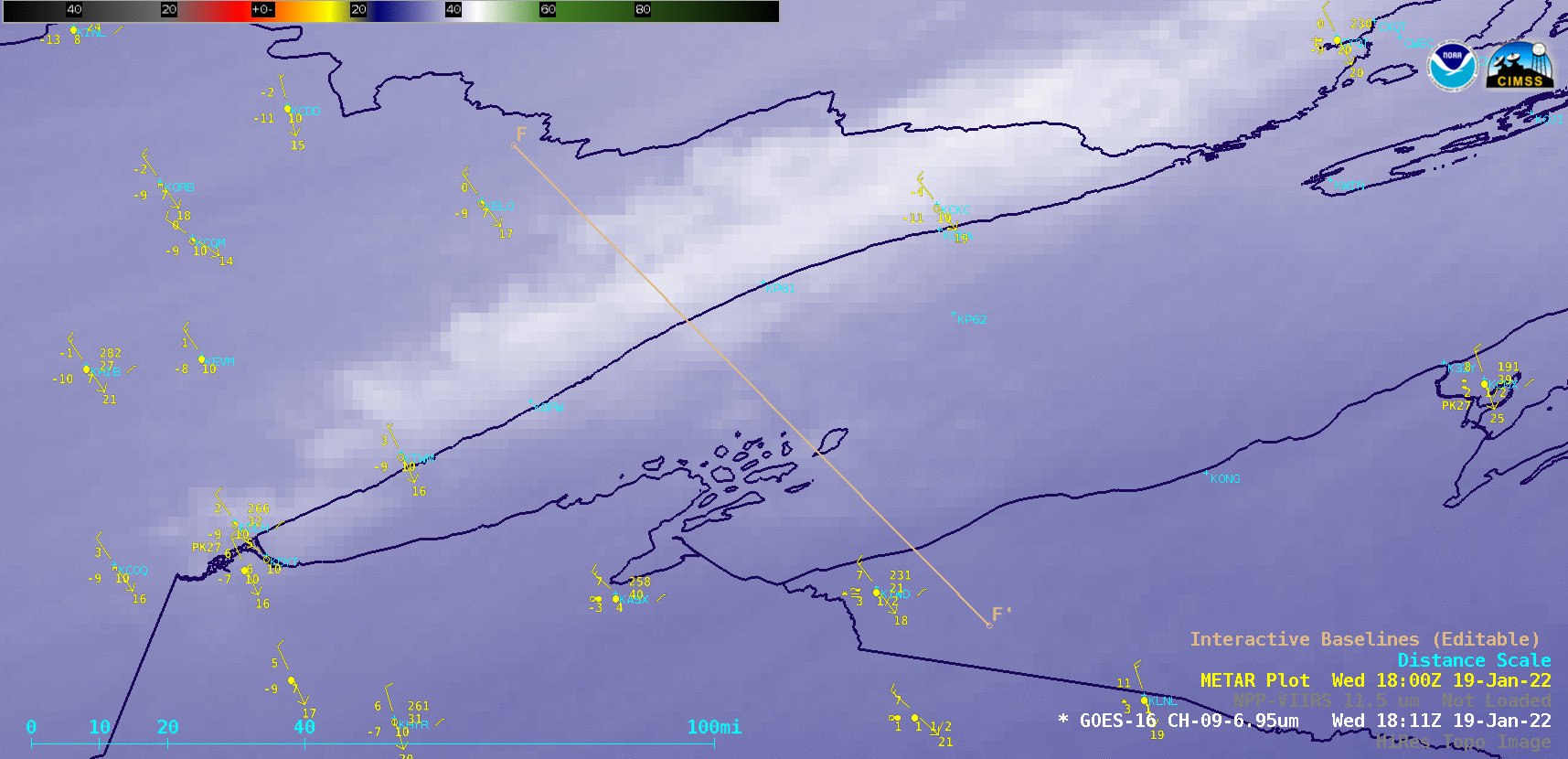
GOES-16 Mid-level Water Vapor (6.9 µm) and Suomi-NPP VIIRS Infrared Window (11.45 µm) images at 1811 UTC [click to enlarge]
A northwest-to-southeast oriented cross section of RAP40 model fields along line segment F-F’
(below) showed a deep pocket of positive Omega
(upward vertical motion, yellow to red colors) that corresponded to the cloud band along Minnesota’s Lake Superior shoreline. Note that this Omega feature was vertically tilted in an “upshear” direction
(toward the northwest), and extended upward to the 500 hPa pressure level. The depth and magnitude of this positive Omega decreased with time, leading to the dissipation of the standing wave cloud.
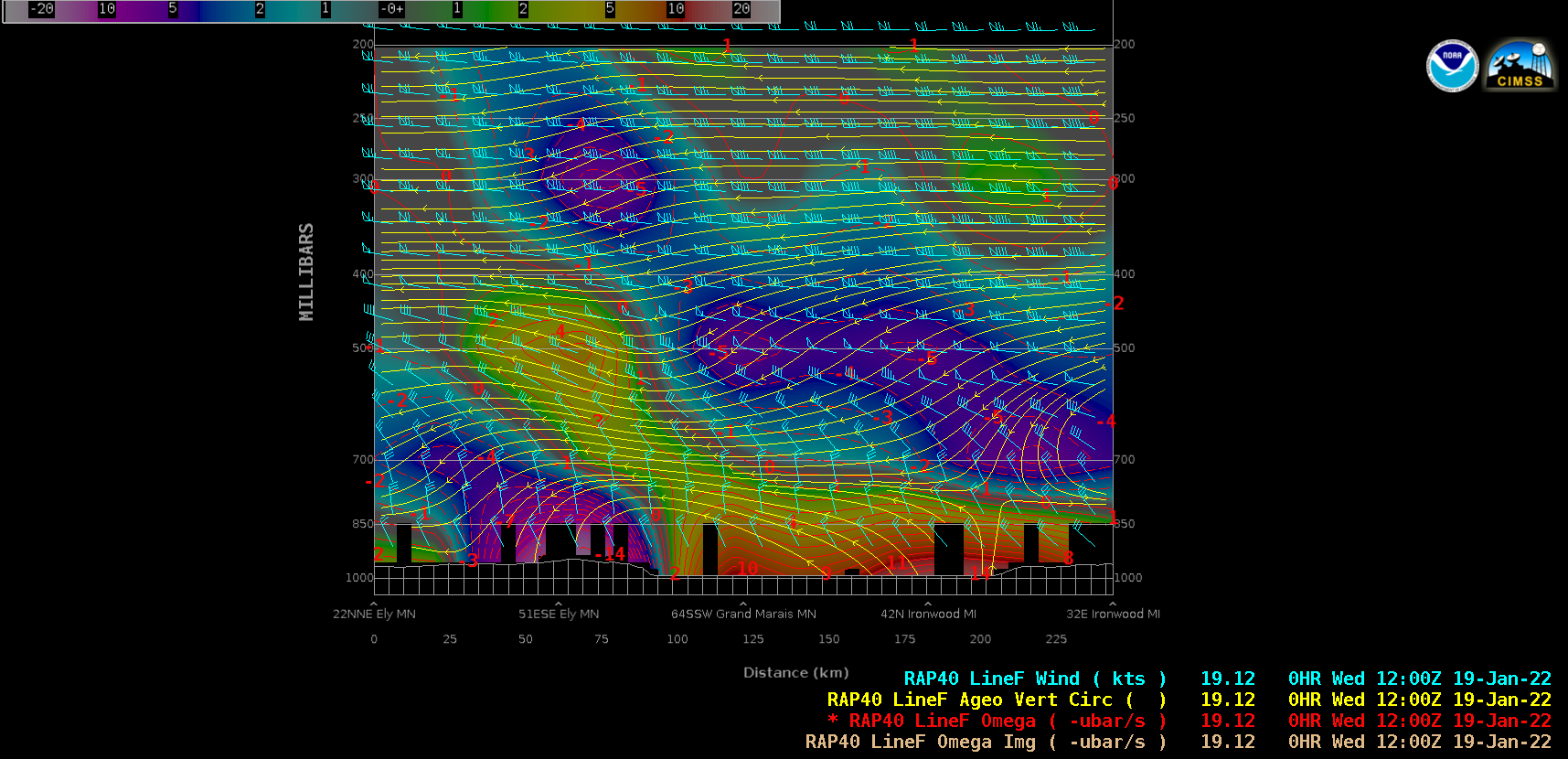
RAP40 model cross sections along Line F-F’ [click to play animated GIF | MP4]
View only this post
Read Less




